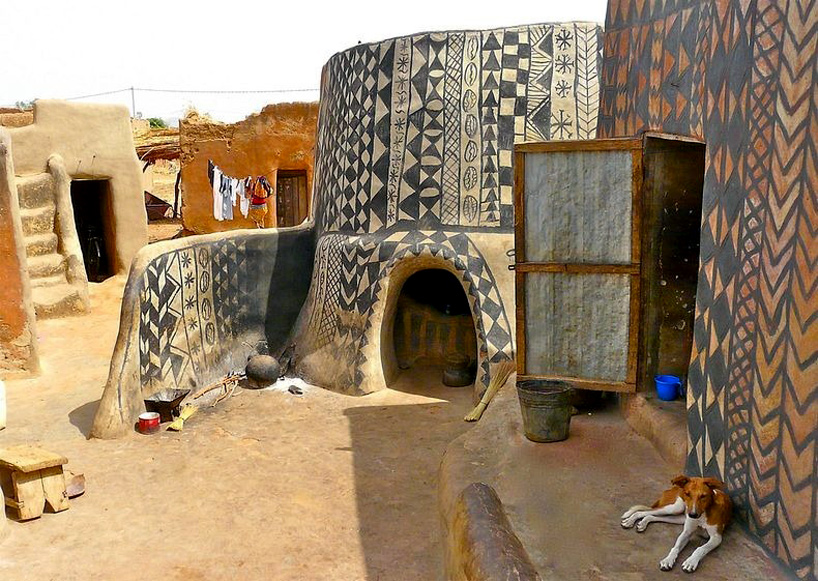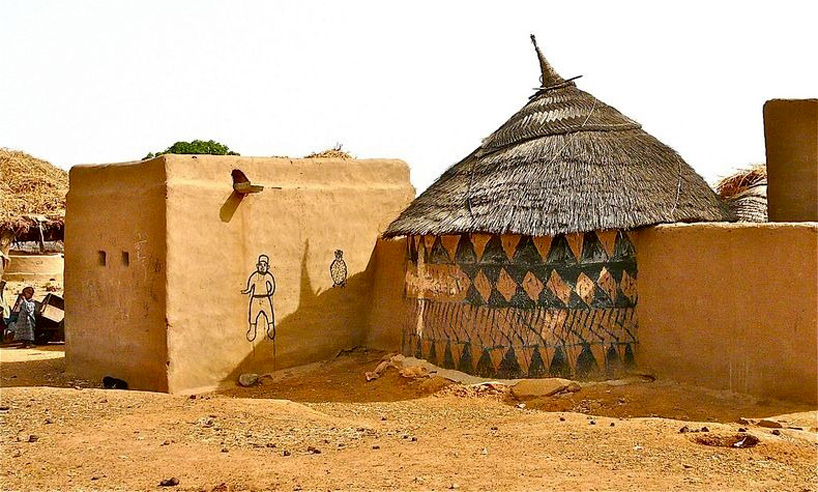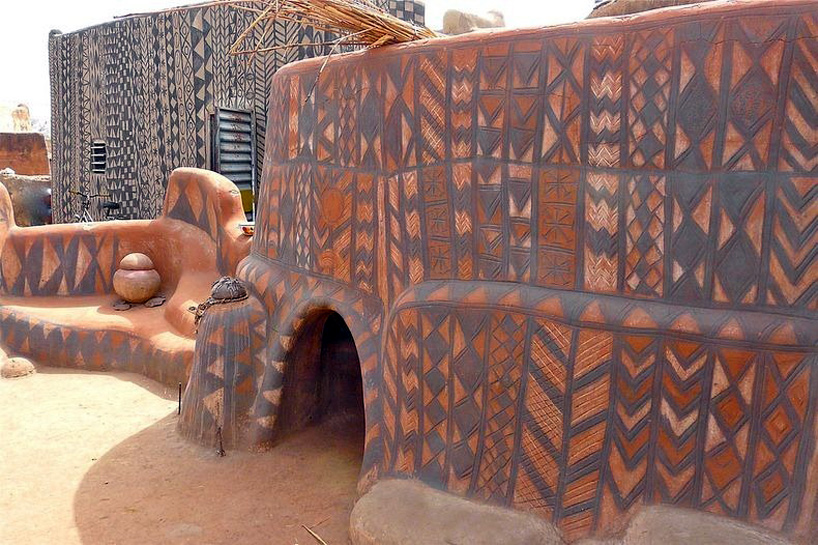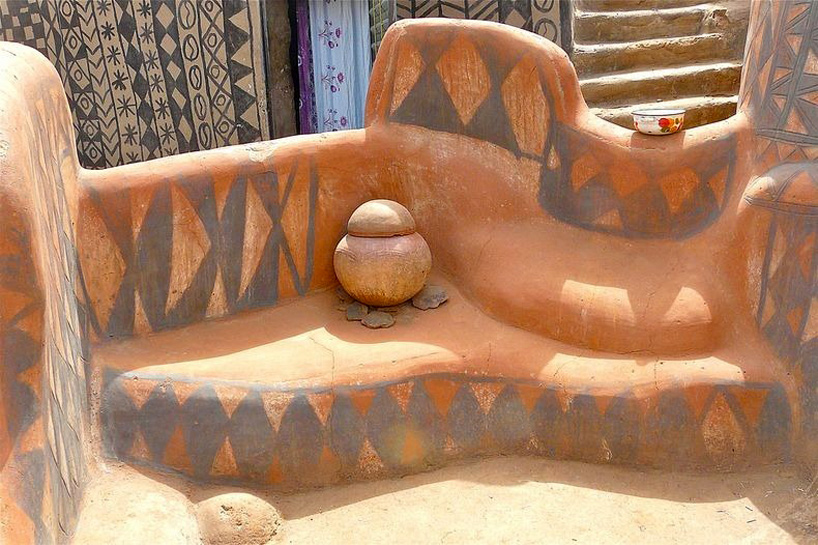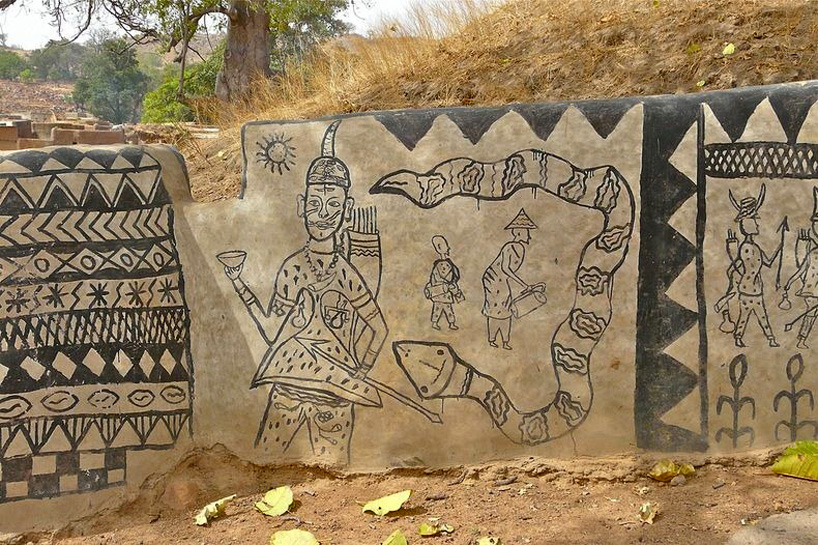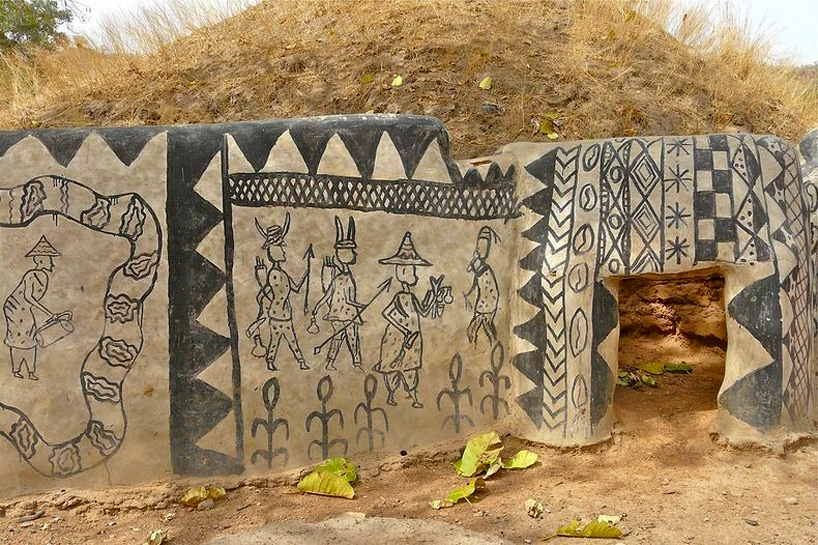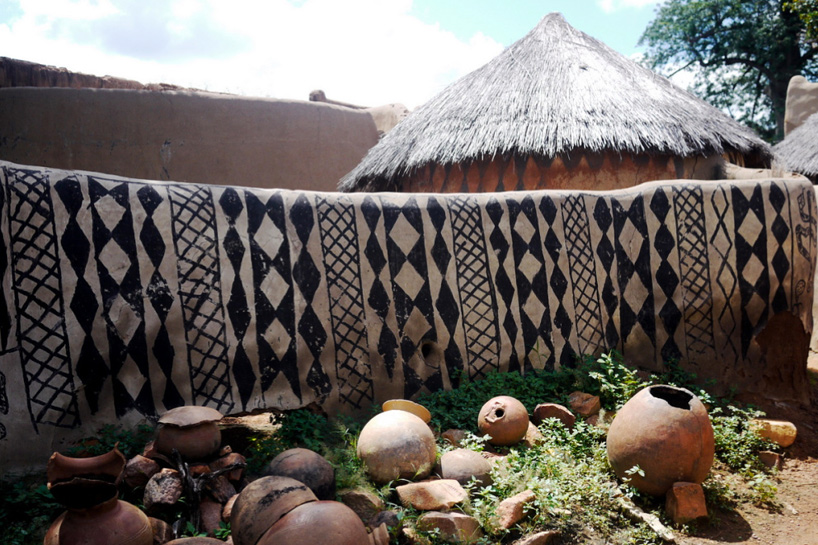Chinua Achebe:
Writer, critic, social historian
March 22, 2013
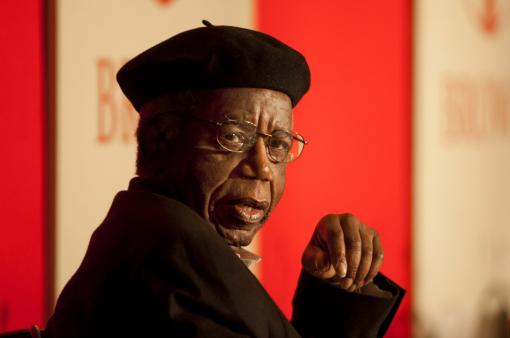
Chinua Achebe The David and Marianna Fisher University Professor and Professor of Africana Studies Credit: Mike Cohea/Brown University
Chinua Achebe, the David and Marianna Fisher University professor and professor of Africana studies at Brown University, died in Boston Thursday evening, March 21, 2013. Achebe, among the world’s greatest writers of his time, joined the Brown faculty in the fall of 2009.
PROVIDENCE, R.I. [Brown University] — Brown University learned this morning of the death of Chinua Achebe in Boston Thursday evening, March 21, 2013.
Achebe, the David and Marianna Fisher University Professor and professor of Africana studies, joined the Brown faculty in September 2009.
Best known for his novels and essays which critique postcolonial Nigerian politics and society as well as the impact of the West on Africa, Achebe was widely acknowledged as “godfather” to a generation of African writers. His first novel, Things Fall Apart, is the most widely read work of African fiction, having sold more than 12 million copies in English alone. It has been translated into 50 languages.
Among his activities at Brown was the annual Achebe Colloquium on Africa, an international gathering of scholars, policymakers, elected officials, writers, and others with a shared interest in current-day African affairs.
“The colloquia he organized at Brown attracted a grand array of guests and effectively demonstrated how the humanities can build understanding by drawing from and encouraging a variety of perspectives,” said Brown University President Christina H. Paxson. “We were honored to have him among us.”
“Professor Achebe’s contribution to world literature is incalculable,” said Brown President Emerita Ruth J. Simmons, who led the University when Achebe came to Brown. “Millions find in his singular voice a way to understand the conflicting opportunities and demands of living in a post-colonial world. The courageous personal and artistic example he offered will never be extinguished. Brown is fortunate to have been his home.”
From Corey D.B. Walker, associate professor and chair of the Department of Africana studies:
He was more than just a colleague, faculty member, and teacher at Brown. He was a gift to the world. We are very privileged to have had him with us for the last four years and even more so for allowing us to get close to him and his family.
At a time like this we could draw many words of wisdom and comfort from the deep wells of various African cultures and traditions to honor him. The most fitting is the simple and elegant phrase, “A great tree has fallen.”
Indeed, the passing of Chinua Achebe is an event of global significance. The entire faculty and staff in the Department of Africana Studies share in the celebration of the great life that is Chinua Achebe.
From Anani Dzidzienyo, associate professor of Africana studies and Portuguese and Brazilian studies:
Part of his impact was that he was always a part of Africana studies. His presence in the department affirmed our intellectual mission and strengthened our commitment and dedication to Africana studies. Indeed, his presence was powerful. When he was first appointed, a friend told me we had captured history and planted it in Churchill House.
He brought the whole history of contemporary African writing to Brown from the time when he wrote Things Fall Apart to the present. His name symbolizes the themes and issues that characterize African societies and cultures. His presence at Brown is something we could not have imagined before it happened. He was an inspiration to us and our students. As a student remarked, “It is incredible that he is here with us.”
In the spirit of Ghanian proverbs, and by implication African proverbs, I leave these words for contemplation: “The path crosses the river and the river crosses the path. Which came first, the path or the river?”
May you travel well, Professor Achebe.
During his time at Brown, Achebe convened four colloquia:
- The 2012 Achebe Colloquium focused on the security situation throughout northern, central, and eastern Africa; ethno-religious insurgency and regime change in West Africa; and peace-building efforts taking place in southern Africa.
- The 2011 Achebe Colloquium explored the Arab Spring and the crisis in Darfur.
- The 2010 Achebe Colloquium focused on three African nations — Rwanda, Congo, and Nigeria — and the crucial issues impacting those countries, the continent, and the world.
- The inaugural 2009 Achebe Colloquium addressed the problems and prospects of the 2010 Nigerian elections.
University flags are flying at half-staff, and the University will plan an appropriate memorial in celebration of Achebe’s life and work.
__________________________
Chinua Achebe:
Obituary of
Nigeria's renowned author
Nigerian writer Chinua Achebe, who has died aged 82, was revered throughout the world for his depiction of life in Africa.
He wrote about the effects of colonialism and its aftermath, as well as political corruption and attempts to introduce democratic reforms.
Born in 1930, he has often been referred to as the founding father of African literature in English.
Chinua Achebe said that any good story or any good novel should have a message and a purpose.
His first novel - the groundbreaking Things Fall Apart, published in 1958 - dealt with the clash between Western and traditional African values - and how traditional norms and values had been undermined.
- Born in 1930 - 30 years before Nigeria's independence
- Referred to as the founding father of African literature
- First novel Things Fall Apart, published in 1958, has sold 10 million copies
- Wrote about the effects of colonialism and corruption
- Later novels include No Longer at Ease (1960), Arrow of God (1964), A Man of the People (1966), and Anthills of the Savannah (1987)
- Nelson Mandela called him "the writer in whose company the prison walls came down"
- Met his wife Christie Okoli in Lagos. They married in 1961 and had four children
- Involved in a road accident in 1990 which left him partially paralysed
Translated into more than 50 languages, its focus was on the traditions of Igbo society in south-eastern Nigeria, where he grew up.
"The white man is very clever. He came quietly and peaceably with his religion. We were amused at his foolishness and allowed him to stay. Now he has won our brothers, and our clan can no longer act like one. He has put a knife on the things that held us together and we have fallen apart," one of the characters said.
He wrote his novels in English and defended the use of English, a "language of colonisers", in African literature.
After he won the Man Booker International Prize for his work in 2007, he told the BBC that African literature was important for the wider literary world, and for African states themselves.
"What African literature set about to do was to broaden the conception of literature in the world - to include Africa, which wasn't there.
"In the stories we tell, it is intended to help us solve the problem of this failure that has overtaken the early sense of joy and happiness when Africans became independent, received their self-determination."
'Bloody racist'
As a boy growing up in colonial Nigeria he excelled at school.
According to the AFP news agency, he described his parents as early converts to Christianity, with his father becoming an Anglican religious teacher and travelling the region with his mother to preach and teach.
Achebe later won a scholarship for undergraduate studies at what is now the University of Ibadan and became fascinated with world religions and traditional African cultures.
After graduation, he worked for the Nigerian Broadcasting Service and soon moved to the metropolis of Lagos, where he met his future wife, Christie Okoli.
They married in 1961 and went on to have four children.
 Nelson Mandela said Chinua Achebe (l) "brought Africa to the rest of the world"
Nelson Mandela said Chinua Achebe (l) "brought Africa to the rest of the world"
He gained worldwide attention for Things Fall Apart, which was published two years before Nigeria gained independence from the UK in 1960.
As well as writing novels he was also an academic.
In 1975, his lecture - An Image of Africa: Racism in Conrad's Heart of Darkness - became the focus of controversy, for its criticism of Joseph Conrad as "a bloody racist" and was later published.
Former South African President and anti-apartheid fighter Nelson Mandela, who spent 27 years in jail, once said that in the company of Chinua Achebe's novels "prison walls fell down".
He also said that he was the writer who "brought Africa to the rest of the world".
Much of his work reflected his belief that his own country had failed to realise its potential.
Honour refused
After a car crash in 1990 which left him partially paralysed and in a wheel chair, Achebe moved to live in the US - only returning to Nigeria infrequently.
But he continued to write and his novels, poems and essays and in his later years he was an outspoken critic of the Nigerian government.
He has twice turned down the offer of a title Commander of the Order of the Federal Republic, once in 2004 from Nigeria's then President Olusegun Obasanjo and again in 2011 from President Goodluck Jonathan.
"What's the good of being a democracy if people are hungry and despondent and the infrastructure is not there," Mr Achebe told the BBC in 2004, explaining his decision.
"There is no security of life. Parts of the country are alienated. Religious conflicts spring up now and again. The country is not working."
Last year, he published a long-awaited memoir about the brutal three-year Biafran war - when the south-eastern Igbo region tried to split from Nigeria in 1967.
He had acted as roving cultural ambassador for Biafra at the time, but for more than 40 years he remained silent about his war experiences.
More than one million people died during the conflict and in the book he accused the UN of standing by, like Nigeria's government, as Biafra was crushed.
"You see we, the little people of the world, are ever expendable," he wrote.
>via: http://www.bbc.co.uk/news/world-africa-21896414
 image © scott worthingtonGURUNSI EARTH HOUSES
image © scott worthingtonGURUNSI EARTH HOUSES

